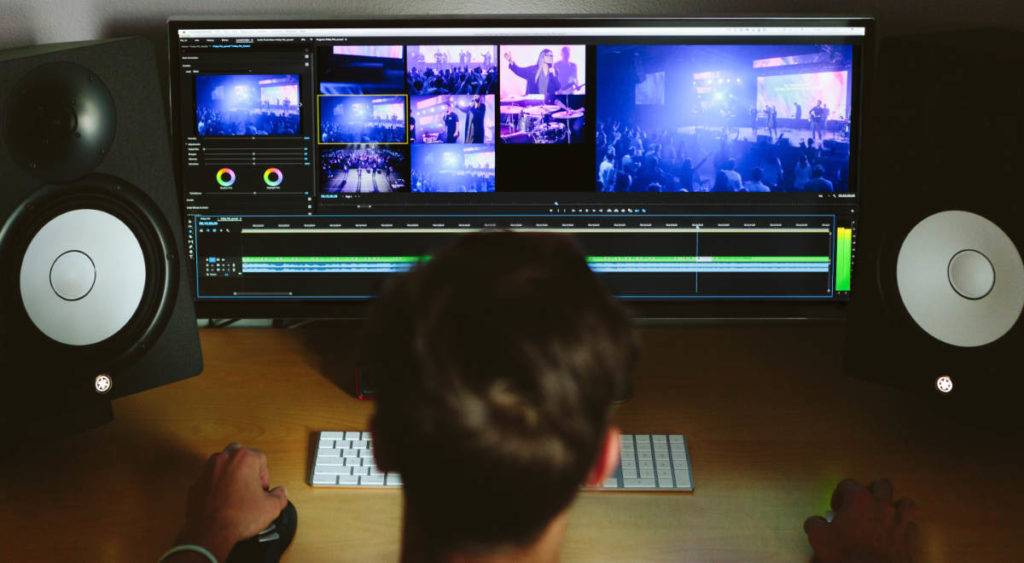Most sports properties and other organizations have a wide range of digital assets that need to be stored but can be practically impossible to organize so they can be easily accessed. From your game summary to your player roster to videos captured at the last game, digital asset management is critical to keeping each asset organized and ready for its next use.
Because the number of digital files an organization owns will continually increase, having digital asset management systems for creative files and other content should be a priority. That’s especially true if your team regularly reuses digital content and brand assets.
Read on to learn what digital asset management is, the benefits of setting up your own digital asset management software, and how it can help keep your team on track to success.

What Is a Digital Asset?
Every organization has digital assets, but many people need to learn what a digital asset is.
In simple terms, a digital asset is just a piece of media that belongs to your organization.
A digital asset can come in many forms. Some digital asset examples include:
- Images
- Short Videos
- Logos
- Graphics
- Animated graphics
No matter what type of work your organization engages in, having a large array of digital assets comes with running your day-to-day operations. And this can be especially true for sports organizations, which regularly capture real-time gameday video, photo and audio content; accept fan content submissions; and so much more.
Digital assets build up over time, become outdated and must be edited. All this means that you can end up with multiple files, different formats and various versions of the same document.
Digital Assets Are Only Valuable When Used
A digital asset acts as a visual representation of something your brand is trying to convey.
Whether it’s a social media graphic that alerts fans to a promotion or a video showcasing a rare event moment, good digital brand assets can do wonders. They can create a connection between your organization and followers and entice them to stay engaged with your content.
Because of this, your digital assets — especially visual ones — should be seen as a vital tool in your organization’s operations and marketing materials. When your website has strong images, and your social media accounts post relevant digital content, people are more likely to remember your brand. And they’re much more likely to buy your game tickets and other offerings, contact your team, or follow your social accounts.
Ultimately, good digital assets mean more brand awareness and recognition, which is one of the most essential things for any organization — no matter how small or large you may be.
So with strong digital asset management as part of your organizational process, you’ll find it easier to create a loyal community of fans, customers and employees aligned with your vision.

What Is a Digital Asset Management System?
Digital asset management (DAM) is about finding solutions to store and manage your digital asset library and rich media.
Using a digital asset management system (a DAM) can provide easy access to your organization’s digital assets for all teams (such as internal and external stakeholders, clients, and sales and marketing staff) using logins or public or private links.
With digital asset management software, your team can accomplish many things:
- Organize your files after asset creation
- Move assets through the approval process
- Manage approved assets
- Locate documents and images in different file formats
- Re-upload files after using image editing software
- Find assets for social media
- And much more
It’s all made possible by using the right DAM system.
Digital asset management platforms also make it much easier to create agile workflows, ensure brand consistency and boost productivity in your teams.
Rather than having your important assets spread across various folders on employees’ computers or random hard drives, having them in one shared location means you can maximize value for your brand and use assets to their full potential.
Real-Time Digital Asset Management Is the DAM of the Future
Keeping your digital assets organized and available to the creative team is critical. But in today’s real-time world, these assets need to be available to more people, and they need to be accessible as soon as they’re captured. While DAM systems can provide reasonable access to multiple departments and dozens of users, real-time digital media distribution to hundreds or thousands of people is a must-have — especially for sports and entertainment companies.
Instead of turning digital assets into derivative creative works — videos, webpages, collateral and more — organizations are looking to feature them on social channels. Social teams, influencers and staff want to access the latest assets to share on social media platforms like Instagram, Twitter, YouTube and TikTok. Making all (or a selection) of your digital content inventory available in real time gives every person the power to become a micro-influencer on social media.
That larger digital footprint expands reach, increases engagement and results in more brand recognition and loyalty.

Why Is Digital Asset Management Important?
Every game or event creates digital assets of all formats. Moreover, they may be generated by your team and from external sources like fan contributions.
Most DAM solutions offer a simple and efficient way to keep track of your digital assets. But they’re a lot more than just storage for your files.
Here are some main reasons why digital asset management (DAM) is so important.
1. Boosts creativity
Your digital asset management software can be integrated with a range of tools like Adobe Creative Suite to give your employees more control over the assets they create.
Whether they need to edit images, update documents or make changes to a PowerPoint presentation, your team won’t be held back by functionality when you choose the right digital asset management system.
2. Enhances organization
Organizing assets can be challenging when you have a wide range of files and file types, along with so many different people and teams needing access.
Effective digital asset management gives you a secure place to hold all your assets. Further, you can easily track the asset lifecycle and myriad updates for any individual asset and organize metadata management — all in one place.
So whether you’re creating new assets all the time, updating old assets or working with existing assets, there is a wide range of solutions to keep your creative files organized.
3. Simplifies distribution
A team rarely works in isolation. So your employees will probably share assets with other sales teams or external partners.
Digital asset management systems make it easy to distribute high-converting assets and give everyone access to the files needed to do their job as best as possible.
4. Fosters more collaboration
Rather than having teams work on their design files separately, your digital asset management solution can provide a way for everyone to work together — and maintain brand consistency simultaneously.
With the right DAM solution, people can work on the same file, upload new versions and keep track of version control. This capability means everyone can keep an eye on the performance of each asset in real time.
What Does a Digital Asset Manager Do?
Digital asset management companies can help you organize your critical assets and enhance your brand’s operational efficiency in the process. But what is a digital asset manager, and what do they do?
A digital asset manager will be the tool your team uses to store and manage all of your important files.
This tool will be responsible for providing a safe and secure platform that your employees and external partners can log into and quickly access all their digital assets on demand.
Choosing a Digital Asset Management Platform
Different DAM solutions offer very different services, so there isn’t one single digital asset management solution that will work for all companies.
If you want to invest in DAM software and find content management systems that will work for you and your team, you should start by considering the following points.
- What digital assets do you have?
- How valuable are your assets?
- Are there any current DAM system issues your organization is experiencing?
- Why is DAM (digital asset management) important to your organization?
- What functionality do you need (e.g., editing tools, cloud software, file formats, etc.)?
- Now make a list of all the potential DAM systems that fit your needs.
- Compare all your options and ask stakeholders for input.
- Choose the right digital asset management solutions for your team.

How Do You Implement Digital Asset Management?
As with any new platform, the implementation process is one of the most important.
With a misstep here, your team will never be able to realize the full benefits that come from digital asset management software.
Here are five key steps that you should follow to ensure success with your new DAM solution.
1. Complete a thorough audit of existing assets
Before implementing a new platform, you need to know what media files you already have and what organizational requirements you should consider.
You should be populating your new DAM software with up-to-date assets in relevant digital formats.
2. Choose the right DAM software partner
Your digital asset management software will become the backbone of your files and assets, so choosing the right DAM technology partner is critical.
Look at the different DAM software options open to you and choose a DAM platform that most closely fits your organizational needs today and how you plan to grow in the future.
Many sports organizations are going even one step further. They’re looking beyond traditional DAM software for help orchestrating their entire digital asset workflow in real time. The dynamic live event nature of their business means they need to manage digital assets on the fly and collect and distribute them — while matches are still in progress. So, they’re turning to Greenfly, a cloud-based software platform that automates the full flow of digital media in seconds — from capture to posting on social, digital and even linear channels.
Whether your needs are digital asset management or full digital asset coordination in the moment, it’s critical to find the right software that meets your needs and supports your continued digital transformation.
3. Agree on a system for filing and organization
Content management systems can quickly become cluttered and disorganized. So agreeing on a single storage system to manage assets, manage employee records and track organizational assets is essential.
Whether you organize by department, type of media assets or by date to keep the most up-to-date materials easily accessible, most DAM platforms can be tailored to suit your team.
4. Set up automation and integrations
With most content management systems, you can introduce shortcuts and integrations that make managing your creative assets easier.
From automating the approval process to making it easier for employees to store files in the correct folders, automation is vital for efficient and effective asset management.
5. Allocate roles and permissions
Finally, it’s also crucial for sales and marketing organizations to allocate roles and permissions within their DAM software.
This action makes it easier to give managers more control and responsibility over other employees. It encourages people to take ownership of each digital file they upload onto the DAM system.

How To Solve the Most Common DAM Digital Asset Management Challenges
If you don’t take asset management seriously, you could find yourself facing a range of different issues.
Here are some of the most common challenges companies can face with information management technology and how you can ensure you avoid running into the same challenges when introducing your new DAM systems.
1. Misplaced files
When you’re using Dropbox or Dropbox alternatives to manage your assets, there’s nothing more annoying than failing to locate an important document you need for an urgent report or meeting.
This problem can happen when teams start to create their own folders or upload files in the wrong place.
To avoid this, create a standard filing system and show everyone how to use it. Introduce standards of use, training sessions and workshops to ensure that all teams are on the same page.
2. Inefficient workflows
DAM software should boost the productivity of your teams, not hold them back. If you’re implementing workflows that are inefficient or unrealistic, you could be causing your employees more problems.
Integrate other tools, create easy ways to approve licensed assets and enable collaboration across teams so everyone can get their work done efficiently and effectively!
3. Lack of governance
Finally, many companies may need more governance and responsibility for their content management system.
To accomplish this, you should allocate roles and permissions within the platform and choose an employee from each team who will be in charge of updating and maintaining the files for their department.
When there is clear governance and instructions on best practices, you are much more likely to enjoy all of the benefits of a well-functioning DAM system.
Greenfly Is a Real-time Digital Asset Management Platform
Now you know what digital asset management is and what it can do. When looking at the future of digital asset management, you should be seeking a real-time DAM or asset distribution platform. These are alternatives to the digital asset management systems conceived more than 20 years ago, long before social media.
If you’re interested in stepping up your digital asset management game to bring all of your digital media processes together on event day and beyond, we’d love to help you along the way.
Greenfly’s unique platform is more than a DAM. It makes it easy for sports properties and other organizations to upload files, organize assets and maximize the value of each digital media asset. Our automated collection, management and distribution solution can save you and your team time, money and the stress of manual tasks. And it promptly gets your digital media where — and when — it needs to go.
To find out more, get in touch with our team today.


